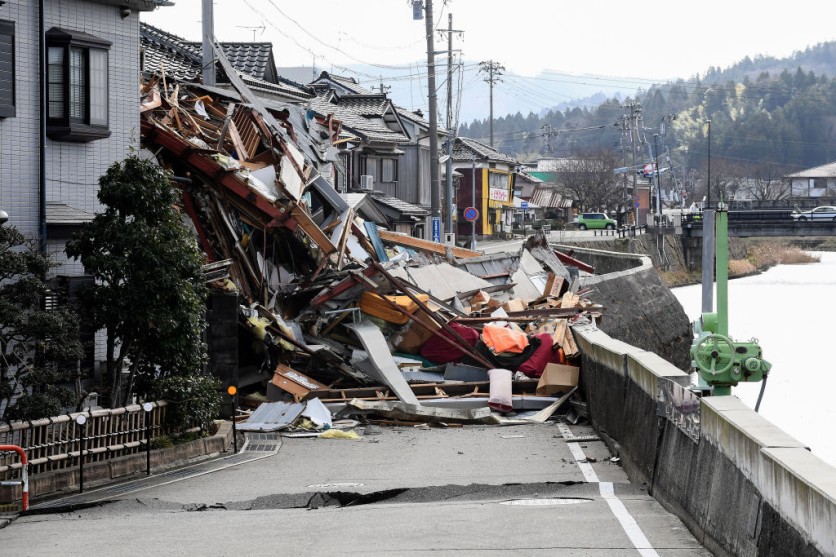The recent earthquake in Japan stands out due to its unique origin, a cryptic earthquake swarm ongoing in the region since 2020, distinguishing it from the typical subduction-related seismic activities that Japan commonly experiences.

Debris blocks a road in the city of Wajima, Ishikawa prefecture, on January 5, 2024, after a major 7.5 magnitude earthquake struck the Noto region on New Year's Day.
Unraveling the Mystery of Earthquake Swarm
Professor William Frank, the Victor P. Starr Career Development Professor in the Department of Earth, Atmospheric and Planetary Sciences at MIT, has been dedicated to studying the seismic phenomena occurring in the region of the recent earthquake.
As he delves into this enigmatic occurrence, Interesting Engineering reported that Professor Frank highlights Japan's vulnerability to earthquakes, attributing it to its location on the western edge of the Pacific plate.
The intricate junction where two plates are subducting beneath the tectonic plate Japan sits on contributes to the seismic stress generated by the plates' movements, leading to frequent seismic activities.
Contrary to expectations, the recent earthquake that struck the island's west coast was not a result of subduction. Instead, it occurred in an area known for its active tectonics unrelated to subduction.
Adding intrigue to this region is an ongoing earthquake swarm that has perplexed scientists since 2020. Earthquake swarms, marked by a surge in seismic activity without a clear epicenter, can persist for days, months, or even years.
Notably, the Noto Peninsula swarm has surpassed the anticipated earthquake frequency in the region for several years. The inherent unpredictability of earthquake swarms poses a formidable challenge in forecasting future tremors.
Unlike aftershock sequences, swarms lack a discernible "on" and "off" switch, making it challenging to predict their duration. Professor Frank underscores the importance of careful observation over time to differentiate earthquake swarms from general seismic activity.
Looking Back
On the first day of 2024, Japan faced a tragic earthquake, this time striking the western area of the Noto Peninsula and resulting in the loss of over 200 lives.
Japan, unfortunately, has a history of grappling with seismic events, notably the devastating 2011 earthquake with a magnitude of 9.1 that triggered a tsunami, claiming nearly 20,000 lives.
Diverging from the immense subduction zone event in 2011 that unleashed devastation, the recent earthquake on the Noto Peninsula held a crucial distinction, it lacked the potential for a tsunami due to its inland location.
However, the persistent earthquake swarm in the region raises concerns about future seismic activities. Unlike forecasting aftershock sequences, predicting the trajectory of an earthquake swarm poses a greater challenge.
The lingering question of whether the swarm will continue or cease adds complexity to long-term forecasting efforts.
The collective memory of the devastating 2011 earthquake remains vivid among many Japanese people. This catastrophic event underscored their vulnerability to natural disasters and emphasized the significance of comprehending factors that amplify earthquake destructiveness.
In contrast to the 2011 quake, which originated as a subduction zone giant offshore, triggering a tsunami that intensified the impact, MIT News reported that the recent Noto Peninsula earthquake's inland location eliminated the risk of a tsunami.
This underscores the critical importance of understanding the tectonic context in foreseeing the potential consequences of seismic events.
Related Article : Japan's Earthquake Sparks Renewed Debate on Nuclear Power Resumption

ⓒ 2025 TECHTIMES.com All rights reserved. Do not reproduce without permission.




